The stress of wartime was weighing on former Prime Minister John Curtin (1885-1945) when he penned a melancholy reflection to his dear friend ‘Yat’, 10 months before he died, just prior to the end of WW II.
I am feeling flat & sad & overburdened. Whether it the years, or work, or whatnot I do not know.
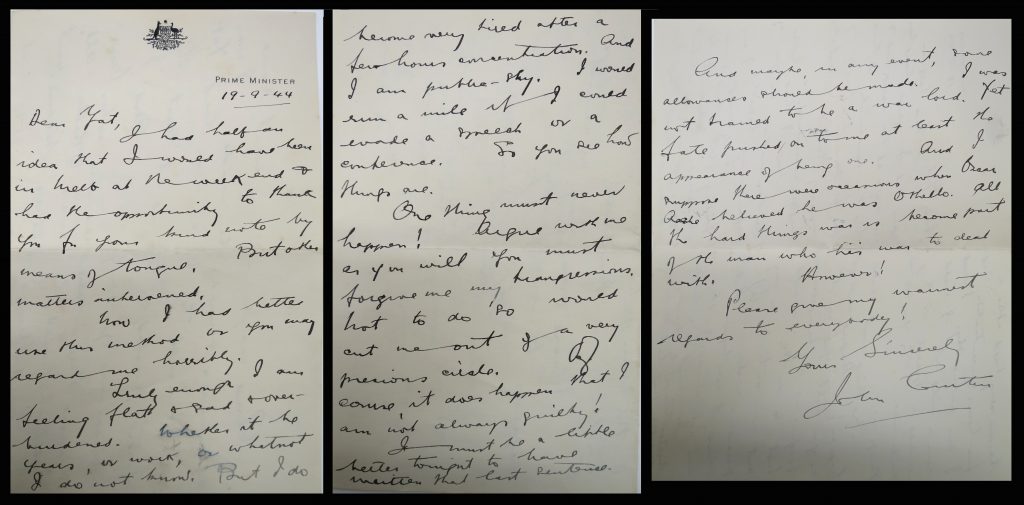
The George Ovenden Papers (MS 10711) offer fascinating glimpses into the life of Sarah Yatala Ovenden (née Bruce) (1894-1962), and an enduring friendship emerging from her involvement in the Victorian Socialist Party (VSP) during the early 20th century.
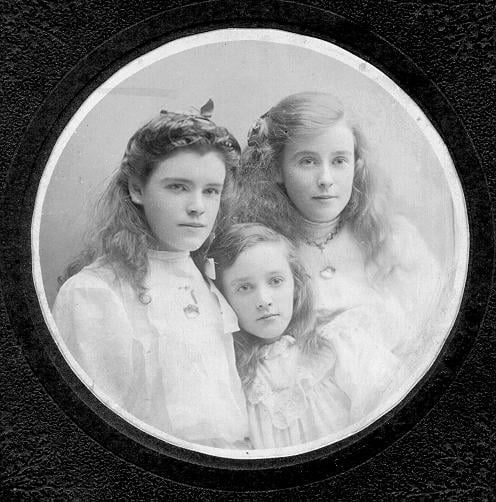
John Curtin Prime Ministerial Library, Records of Robin Glenie, JCPML00570/4
With its welcoming family circles and social gatherings, the VSP was the foundation for many warm and lasting friendships. This was a formative period for a young John Curtin, searching for community and companionship after a difficult upbringing. Through the VSP, Curtin developed a close rapport with the Bruce family, often jotting short lively notes to the Bruce sisters, Yatala, Jennie and Beryl (Bobbie).
Dear Yat, You might have accompanied me tonight. Anyway I shall punish all of you by talking incessant frivolity tomorrow evening. I am going to your place for tea […]

Along with their parents, Jan Vans Agnew Bruce and Sarah Grace Bruce (née Wayman), the Bruce sisters were early supporters of the Victorian Socialist Party, founded in 1906 by prominent British trade unionist, Tom Mann. Having broad appeal, the VSP amassed some 2000 members, and organised social activities to unite its diverse cohort of agitators.
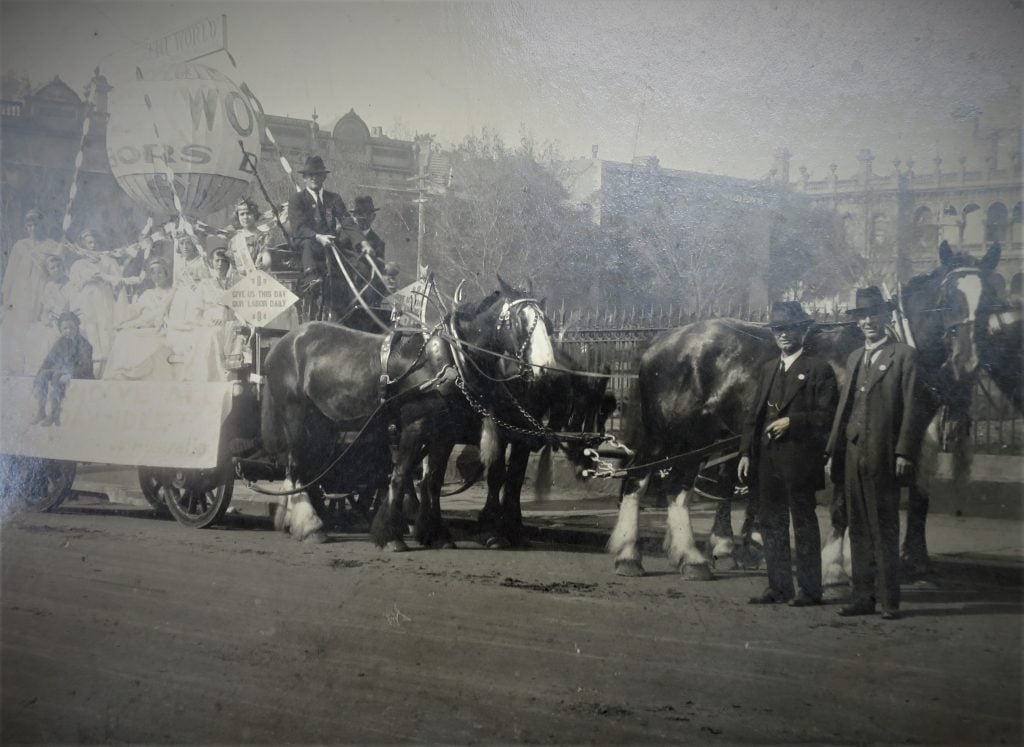
Everyone was welcome and encouraged to participate – including women and children. Along with a choir and orchestra, dances, boat cruises, picnics and camps, there was a drama club, bicycle club, football, and cricket teams [i]. The stream of social activities generated much camaraderie, recorded in the weekly VSP newspaper, The Socialist.
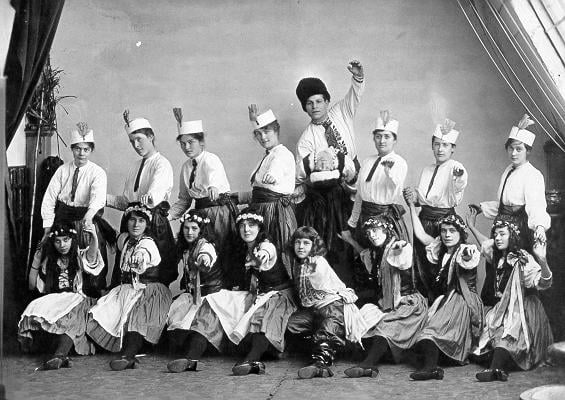
John Curtin Prime Ministerial Library, Records of Robin Glenie, JCPML00570/5
The VSP ardently believed in educating workers to promote socialism. As early recruits to the ‘Young Comrades Contingent of the Socialist Army’ [ii], the Bruce girls attended the Socialist Sunday School, where children aged 6 to 16 learnt socialist principles, ethics, and calisthenics. Students wrote essays, delivered speeches, and were expected to actively participate, question, and suggest improvements to their learning. During this time, Yatala published essays in The Socialist, on topics such as ‘Patriotism’[iii], ‘May Day’ [iv] and ‘What is Socialism?’ [v].
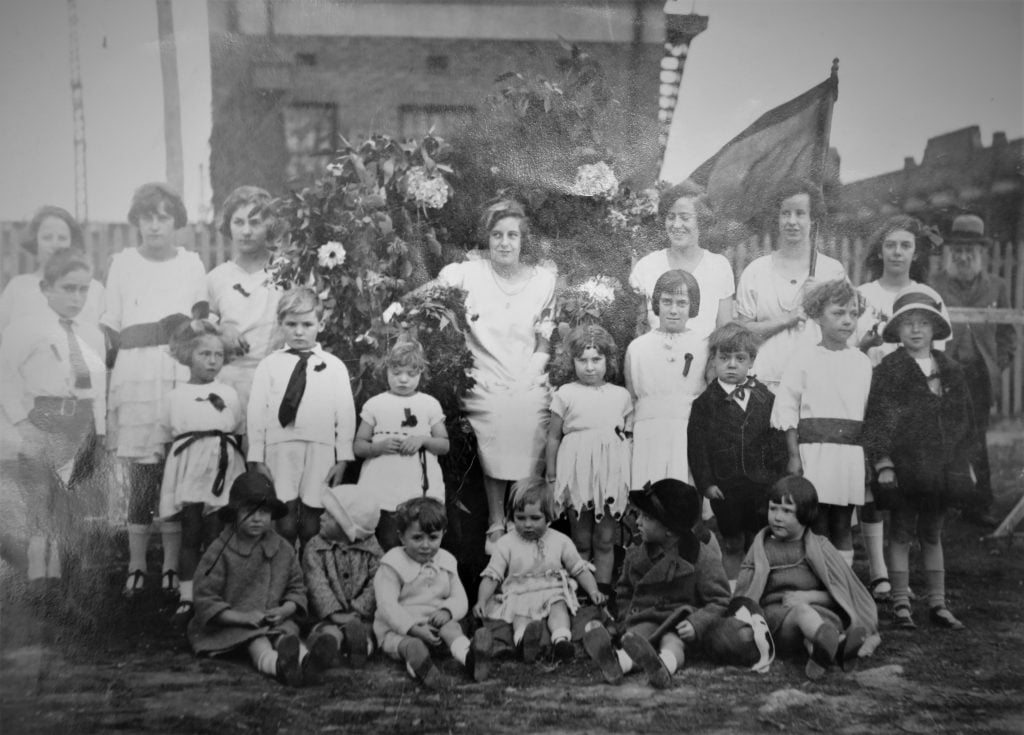
For older VSP members, the speakers class had a similar aim, teaching basic skills in grammar, composition, and oratory, to communicate socialist ideals and persuade (potentially hostile) audiences. These lessons in public speaking, literature, and economics, were invaluable for a generation of future trade unionists and labour movement leaders, including a young John Curtin [vi].
From 1906-1909, Yatala also attended the Melbourne Continuation School, established in 1905 as Victoria’s first state secondary school. Co-educational and secular, the school allowed state primary school students from the working classes to continue their learning. Education usually ceased for these students, who lacked the wealth or privilege necessary to attend one of Melbourne’s private schools. Such was the situation for John Curtin, who left school in his early teens to help support his family. Determined to continue his education, Curtin was able to use resources provided by the VSP, Trades Hall, and public libraries [vii].

Beautiful script preserved in Yatala’s schoolbooks suggests she was a devoted student, who took pride in learning. The school motto, ‘Honour the work’, seems particularly apt with Yatala’s connection to the VSP. Yatala became an educator herself, teaching at the Yarra Park School [viii], as well as the Socialist Sunday School, a role which offered significant opportunity for active female participation in a political space.
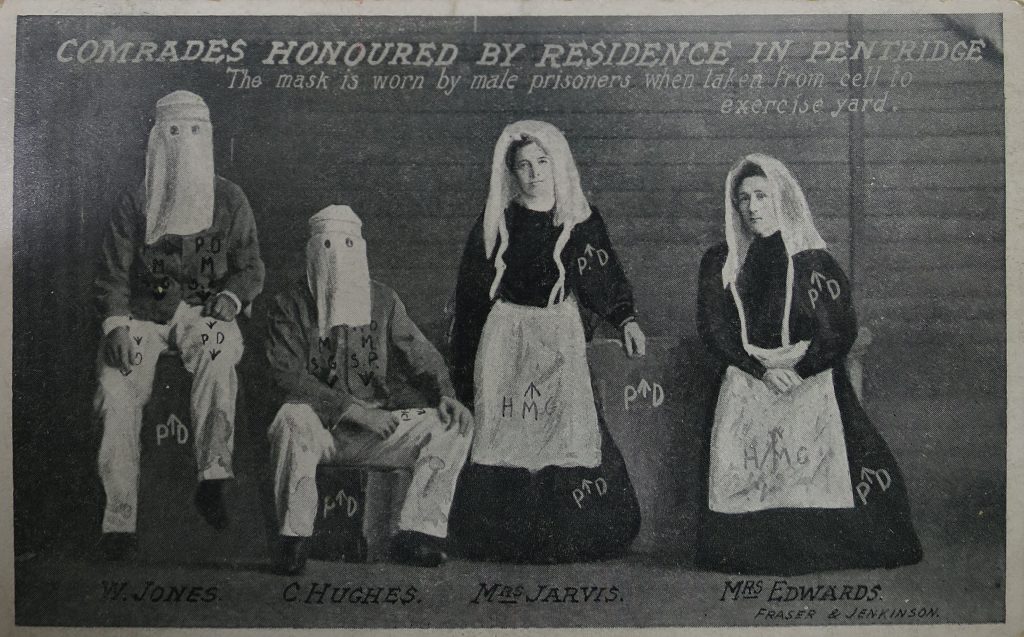
(MS 10711)
Public speaking was a VSP ritual. Speakers of both sexes and all ages would regularly ‘take the stump’, addressing crowds at Yarra Bank and packed theatres during Sunday meetings. Yatala’s mother, Sarah Bruce, was an infamous orator. In 1906, over 20 VSP members defied police orders and were fined or imprisoned for speaking at street-corner meetings. The George Ovenden Papers (MS 10711) includes one of the estimated 5000 postcard sets produced by the VSP to commemorate the ‘Fight for Free Speech’ and raise funds for the prisoners’ families. Curtin honed his speaking skills at these forums and even attempted to revive street-corner meetings as VSP secretary in 1911 [ix].

John Curtin Prime Ministerial Library, Records of Robin Glenie, JCPML00570/7
Owing to their shared political activism through the VSP, the Bruce and Ovenden families were particularly close-knit, sharing excursions and camping together on the Ovenden property at Emerald. In 1921, Yatala married George Ovenden in a quiet ceremony overseen by the Rev. Fred Sinclaire [x]. George Ovenden opened his optometrist practice in Capitol House, Swanston Street in 1926, and treated several famous trade unionists, including Curtin.
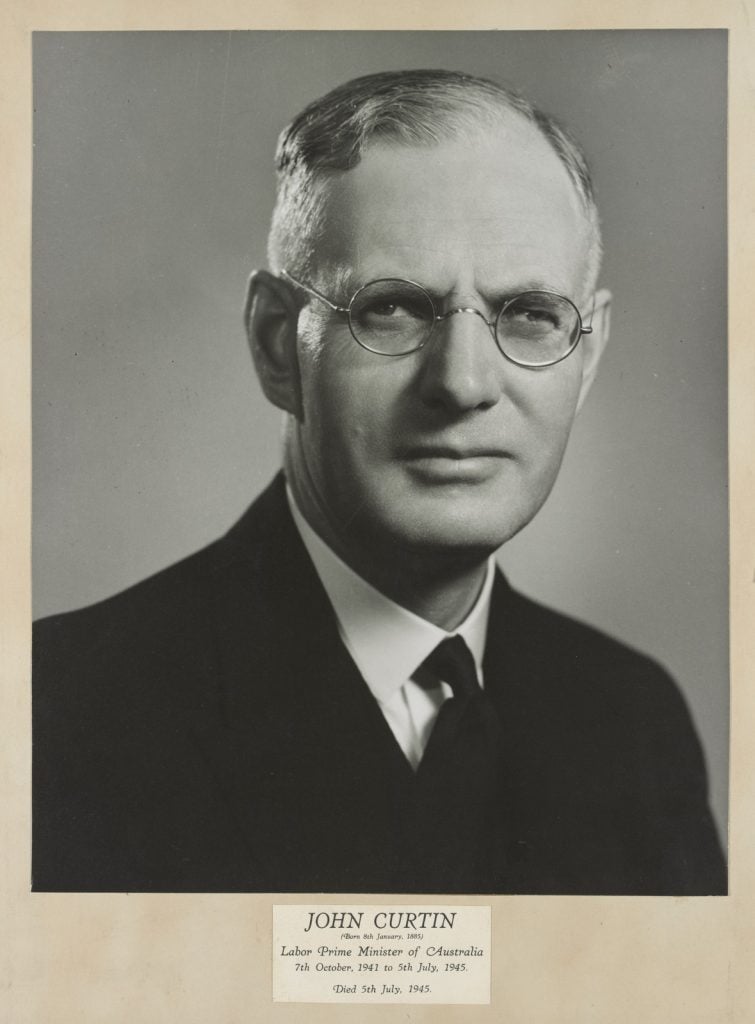
Victorian Trades Hall Council Collection, H29010.
While Curtin’s political career eventually took him away from Melbourne, he would visit the Bruce sisters for cups of tea whenever the opportunity arose. It is believed Curtin first heard of the attack on Pearl Harbour whilst listening to the radio with the Bruce family at their home [xi]. The Bruce sisters were often surprised Curtin found time to visit, especially while prime minister. For all the rejuvenation and comfort the friendship offered, they were also an important reminder to Curtin of his ideological roots in the socialist movement and the energy of his youth [xii].

John Curtin Prime Ministerial Library,
Records of Robin Glenie, JCPML00570/8
Preserving some fascinating fragments of history, this small collection reminds us of the profound value of an enduring friendship and the hope it can instil. A sentiment well expressed by Curtin:
‘Dear Yat, Happy days, sunshine, songs and everything. May they come like stars at night. Jack’
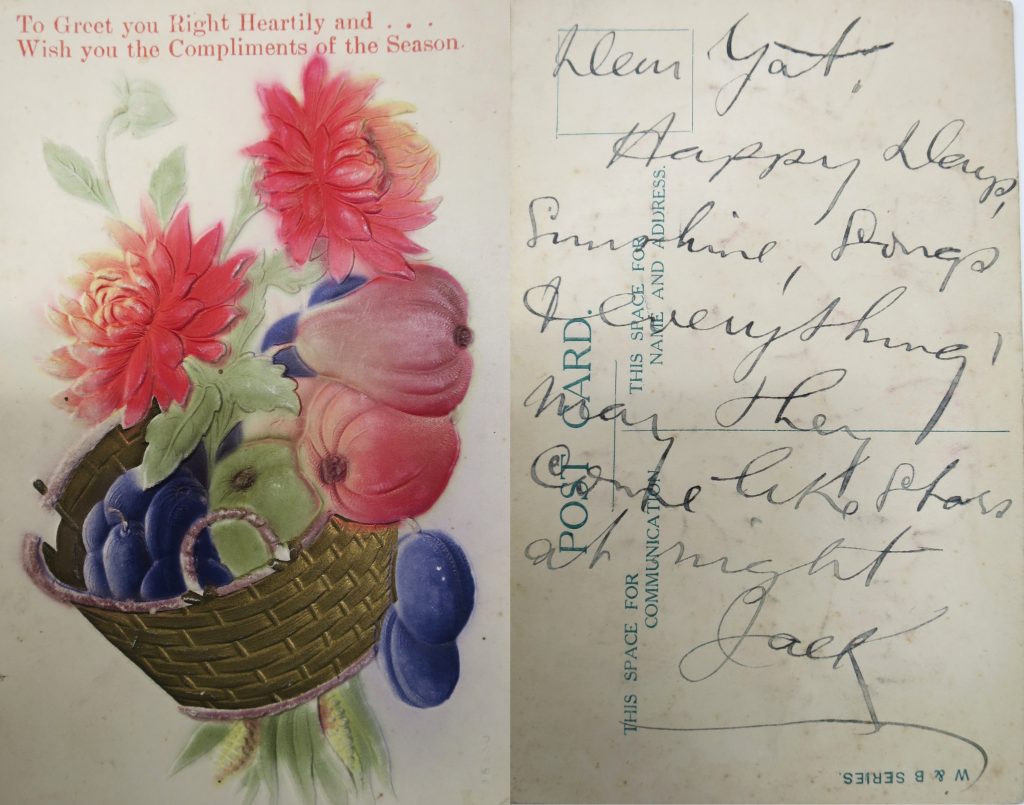
More to explore:
- State Library Victoria offers detailed Research Guides on relevant topics around the history of protest movements and education in Victoria, including Australian history guides specially prepared for VCE students.
- Explore political pamphlets in the Riley & Ephemera Collection.
- View Patrick Harford’s painting Yarra Bank Meeting.
You might also like:
Notes:
[i]. Walker, B 2012, Solidarity Forever, National Press, Melbourne, electronic edition, accessed 4 August 2020.
[ii]. ‘The Children’s Corner. The Young Comrades Contingent of the Socialist Army’, The Socialist, Saturday 22 September 1906, page 7.
[iii]. ‘Patriotism’, The Socialist, Friday 4 September 1908, page 7.
[iv]. ‘May Day’, The Socialist, Friday 3 May 1912, page 1.
[v]. ‘What is Socialism?’, The Socialist, Saturday 7 December 1907, page 6.
[vi]. Byrne, L, 2020, Becoming John Curtin and James Scullin: their early political careers and the making of the modern Labor Party, Melbourne University Press, Carlton.
[vii]. Byrne, L, ‘Constructing a Socialist Community: The Victorian Socialist Party, Ritual, Pedagogy, and the Subaltern Counterpublic’, Labour History, May 2015, No. 108, pp.103-121.
[viii]. Yarra Park School Teachers 1911, East Melbourne Historical Society, accessed 4 August 2020.
[ix]. Day, D, 2000, ‘John Joseph Curtin’, in M Grattan (ed.), Australian Prime Ministers, New Holland Publishers, Sydney, pp. 216-237.
[x]. ‘Party Chronicles’, The Socialist, Friday 18 March 1921, page 3.
[xi]. Keneally, T, 2017, Australians: Flappers to Vietnam, Allen & Unwin, Crows Nest.
[xii]. Ross, L, 1996, John Curtin: a biography, Melbourne University Press, Carlton.

